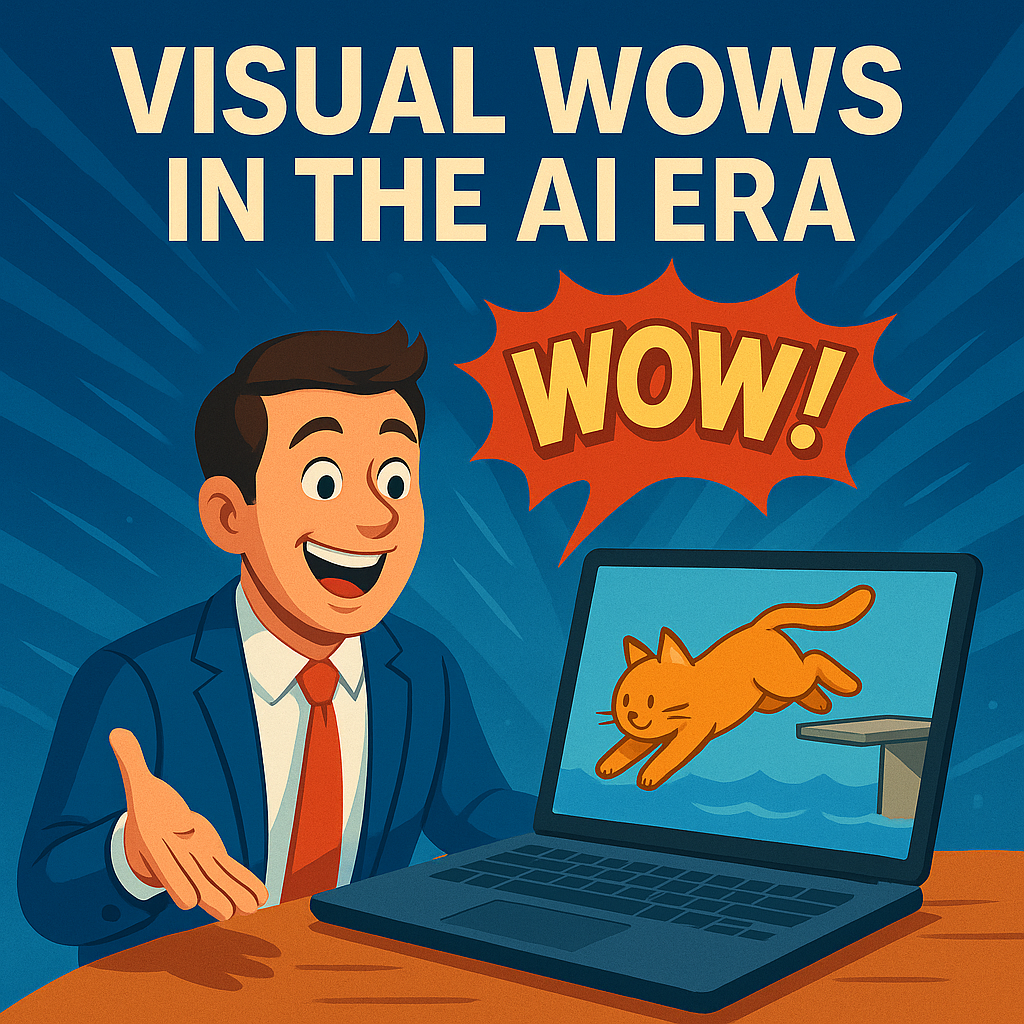Part 3: Going Viral with Product-Led "Visual Wow" Moments
How do products skyrocket from $0 to $10M ARR in months? Through "Visual Wows." In today's visual social media landscape, viral distribution comes from empowering users to create impressive outputs they're eager to share. This shareable "wow" moment is the new engine for product-led growth.

This is the third post in my series on the new distribution era.
Today, with almost every social media platform shifting toward visual content, the most powerful distribution comes from what I call "Visual Wows" or "Visual Viral Output" - visual content that draws a "wow" from viewers.
Hang out on X or LinkedIn, and you'll read about dozens of products that skyrocketed from $0 to $10M in ARR in months. How did they spread so quickly? Viral visual output.
Lovable hit $100M ARR faster than any software company in history
— Ayman Al-Abdullah 🧱 (@aymanalabdul) August 8, 2025
This isn’t because they solely had a great product…
They had:
• Promotion engine dialed
• Processes that could handle scale
• Hired the right people for the right positions
• Performance metrics to keep… pic.twitter.com/dIMxTj1LhS
The most powerful distribution in today's AI era has been from products that let people build "wow" creations that have visual outputs you can share. Midjourney's and OpenAI's image creations, VEO video creation, Lovable, Bolt and Replit websites, ChatGPT's creative writing, and Gamma's instant presentations - each gives people the superpower to create something that was previously impossible for them.
Of course, the idea of a new technology enabling a new form of viral growth isn't unique to AI. We've seen this pattern play out before. When the Facebook social graph became the digital town square, companies like Zynga grew explosively by having players share game updates and invite friends. As email became ubiquitous for consumers, brands like LinkedIn, Groupon, Gilt, and Shop It To Me all reached viral growth by incentivizing users to share offers with their entire contact lists.
In past iterations, viral growth happened because of the ease of contact list sharing. In today's environment, given that social media consists of visually-driven feeds, the viral growth happens when sharing output is visible and generates a "wow" response.
AI is generating the wows. When someone creates an amazing image or presentation or piece of software, it makes them feel like a superhero or Neo from The Matrix who just became an expert in a skill. It's a wow. People are eager to share their wows with the world. And given our feeds are all now visually based, the "wows" that can be shown in images or short videos spread like fire across social media.
Legendary Diving Cats at the Olympics Created with Artificial Intelligence
— Enezator 1 Mn (@Enezator) June 20, 2025
pic.twitter.com/xoXsQwXE7O
The brand that first nails this wow gets associated with the magic experience, and even as others enter the space and the ability loses its magic, the brand's association as the first major player remains. There are now dozens of "vibe-coding" websites, but Lovable, Bolt and Replit all have brand recognition because they were the first to market and were able to get people to visually share the "wows" with screenshots. In contrast, while audio-based sites (like Suno or Udio) and content-driven sites also have amazing wows, they have not gotten nearly the attention or success as they cannot easily visually show the wow.
As AI continues to accelerate, expect more of these shareable visual wow moments. If you are building in AI, try to find your visual Wow moment. What screenshot or short video can your product produce that immediately gives a "Wow! I did not think that was possible" reaction?
Visual, shareable wows are going to bring about many billion-dollar businesses for those who can unlock their potential. So if you are building an AI tool focusing on product-led growth, figure out how to quickly generate a wow and have it easily and visually shareable.